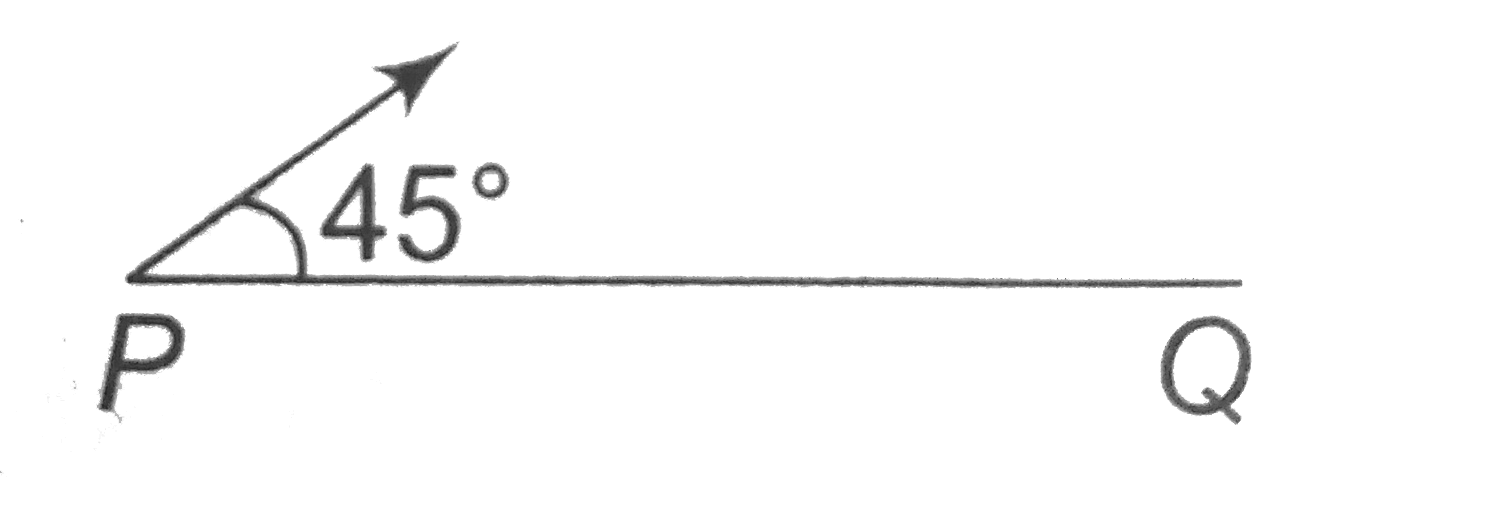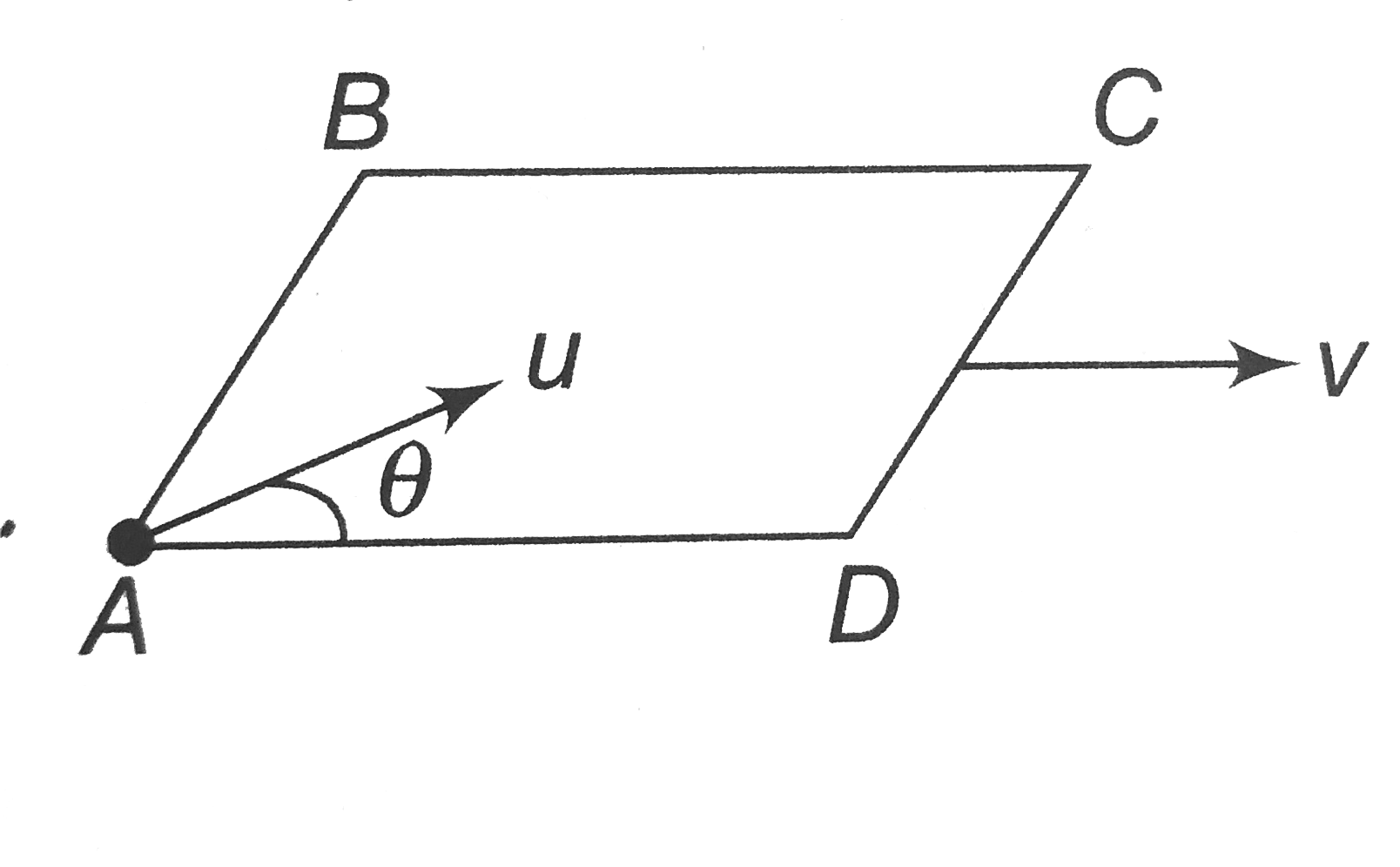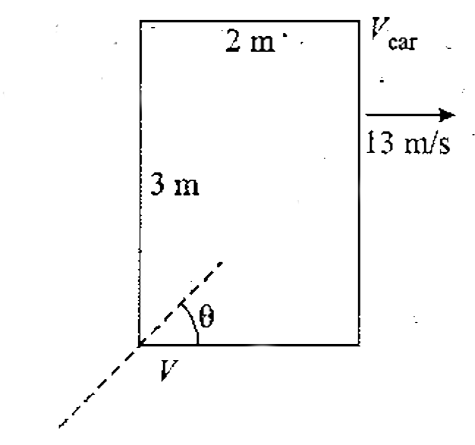Complete Solutions to Problems Based On Mixed Concepts of chapter MOTION IN TWO DIMENSION of Class 11 book with complete answers and questions
| Class 11 | PHYSICS |
| Chapter | MOTION IN TWO DIMENSION |
| A2Z | Problems Based On Mixed Concepts |
| Number Of Questions | 35 |
| Academic Year | 2023-24 |
A ball is thrown from a point with a speed 'v^(0)' at an elevation angle of `theta` . From the same point and at the same instant , a person starts running with a constant speed `('v_(0)')/(2) ` to catch the ball . Will the person be able to catch the ball ? If yes, what should be the angle of projection `theta` ?
View SolutionThe path of one projectile as seen by an observer on another projectile is a/an:
View SolutionA body is projected at `30^(@)` with the horizontal. The air offers resistance in proportional to the veclocity of the body. Which of the following statements is correct?
View SolutionA projectile A is projected from ground. An observer B running on ground with uniform velocity of magnitude 'v' observes A to move along a straight line. The time of flight of A as measured by B is T. Then the the range R of projectile on ground is
View SolutionThe horizontal range and miximum height attained by a projectile are `R and H`, respectively. If a constant horizontal acceleration `a = g//4` is imparted to the projectile due to wind, then its horizontal range and maximum height will be
View SolutionIn the locus diagrams of two projectiles 1 and 2 as shown in the fig.

View SolutionA very broad elevator is going up vertically with a constant acceleration of `2m//s^(2)`. At the instant when its velocity is `4m//s` a ball is projected form the floor of the lift with a speed of `4m//s` relative to the floor at an elevation of `30^(@)`. Time taken by the ball to return the floor is `(g=10ms^(2))`
View SolutionA projectile is fired with initial momentum p at an angle `45^(@)` from a point P as shown in figure. Neglecting air resistance, the magnitude of change in momentum between leaving P and arriving at Q is:

View SolutionTwo identical balls are projected, one vertically up and the other at an angle of `30^(@)` to the horizontal, with same initial speed. The potential energy at the highest point is in the ratio:
View SolutionTwo point particles with masses `m_(1) and m_(2)` are thrown at angles `theta_(1) and theta_(2)` with horizontal with speeds `v_(1) and v_(2)` respectively. R, H and T are range, height and total time of flight respectively. Let `v_(1) sin theta_(1) =v_(2) sin theta_(2)`. Then for both particles
View SolutionIn horizontal level ground to projectile if at any instant velocity becomes perpendicular to initial velocity then what can you say about projection angle with horizontal.
View SolutionTwo particles A and B projected simultaneously from a point situated on a horizontal place. The particle A is projected vertically up with a velcity `v_(A)` while the particle B is projected up at an angle `30^(@)` with horizontal with velocity `v_(B)`. After 5s the particles were observed moving mutually perpendicular to each other. The velocity of projection of the particle `v_(A) and v_(B)` respectively are:
View SolutionThe friction of the air causes a vertical retardation equal to 10% of the acceleration due to gravity, take (`g=10ms^(-2))`. The maximum height will be decreased by:
View SolutionIn the previous problem, the time taken to reach the maximum height will be decreased by:
View SolutionIn the problem 150, the time taken to return to the ground from the maximum height:
View SolutionTwo balls `A and B` are thrown with speeds `u and u//2`, respectively. Both the balls cover the same horizontal distance before returning to the plane of projection. If the angle of projection of ball `B is 15^@` with the horizontal, then the angle of projection of `A` is.
View SolutionA particle is projected with a velocity `vecv=8hati+6hatj m//s`. The time after which it will starts moving perpendicular to its initial direction of motions is
View SolutionThe maximum height attained by a projectile is increased by 5%. Keeping the angle of projection constant, what is the percentage increases in horizontal range?
View SolutionThe maximum height attained by a projectile is increased by 10%. Keeping the angle of projection constant, what is the percentage increases in the time of flight?
View SolutionThe ceiling of a hall is 40m high. For maximum horizontal distance, the angle at which the ball may be thrown with a speed of `56ms^(-1)` without hitting the ceiling of the hall is
View SolutionIn the previous problem, the maximum horizontal distance will be
View SolutionA shell fired from the ground is just able to cross in a horizontal direction the top of a wall 90m away and 45m high. The direction of projection of the shell will be:
View SolutionIn the previous problem, the velocity of the shell will be
View SolutionThe angle of which the velocity vector of a projectile thrown with a velocity u at an angle `theta` to the horizontal will take with the horizontal after time t of its being thrown up is
View SolutionTwo particles move in a uniform gravitational field with an acceleration g. At the initial moment the particles were located over a tower at one point and moved with velocities `v_1 = 3m//s and v_2= 4m//s` horizontally in opposite directions. Find the distance between the particles at the moment when their velocity vectors become mutually perpendicular.
View SolutionA boy throws a ball upward with velocity `v_(0)=20m//s`. The wind imparts a horizontal acceleration of `4m//s^(2)` to the left. The angle `theta` at which the ball must be thrown so that the ball returns to the boy's hand is : `(g=10ms^(-2))`
View SolutionA particle is moving in a circle of radius R in such a way that any insant the total acceleration makes an angle of `45^(@)` with radius. Initial speed of particle is `v_(0)`. The time taken to complete the first revolution is:
View SolutionA smooth square platform ABCD is moving towards right with a uniform speed v. At what angle `theta` must a particle be projected from A with speed u so that it strikes the point B

View SolutionA train is travelling along a horizontal rail at the rate of `90km//hr` and rain, driven by wind blowing in the direction of motion of trani, falls at a velocity of `12.5m//s` making an angle of `30^(@)` to the vertical. Find the velocity of rain (in magnitude and direction) as seen from the train.
View SolutionA wedge is placed on a smooth horizontal plain and a rat runs on its sloping side. The velocity of the wedge is `v=4ms^(-1)` towards the right. What should be the velocity of the rat with respect to the wedge `(u)`, so that the rat appears to ,move in the vertical direction to an observer stading on the ground?

View SolutionA car 2 m long and 3 m wide is moving at 13m/sec when a bullet hits it in a direction making an angle `theta=tan^(-1) 3//4` with the car as seen from the street. The bullet enters one edge of the comer and passes out at the diagonally opposite comer. Neglectingany interaction between bullet and car find the time for the bullet to cross the car :

View SolutionFour person K,L,M and N are initally at the corners of a square of side of length d. If every person starts moving, such that K always heads towards L, L heads towards M, M heads directly towards N and N heads towards K, then the four perons will meet after
View SolutionA particle P is sliding down a frictionless hemispherical bowl. It passes the point A at `t=0`. At this instant of time, the horizontal component of its velocity is v. A bead Q of the same mass as P is ejected from A at `t=0` along the horizontal string AB, with the speed v. Friction between the bead and the string may be neglected. Let `t_P` and `t_Q` be the respective times taken by P and Q to reach the point B. Then:

View SolutionIn `1.0 s`, a particle goes from point `A` to point `B` , moving in a semicircle of radius `1.0 m ` (see figure ). The magnitude of the average velocity

View SolutionA simple pendulum is oscillating without damiping, When the displacement of the bob is less than maximum, its acceleration vector `veca` is correctly show in:
View Solution
Problems Based On Mixed Concepts questions and complete solutions for chapter MOTION IN TWO DIMENSION of A2Z PHYSICS (HINGLISH) of Class 11